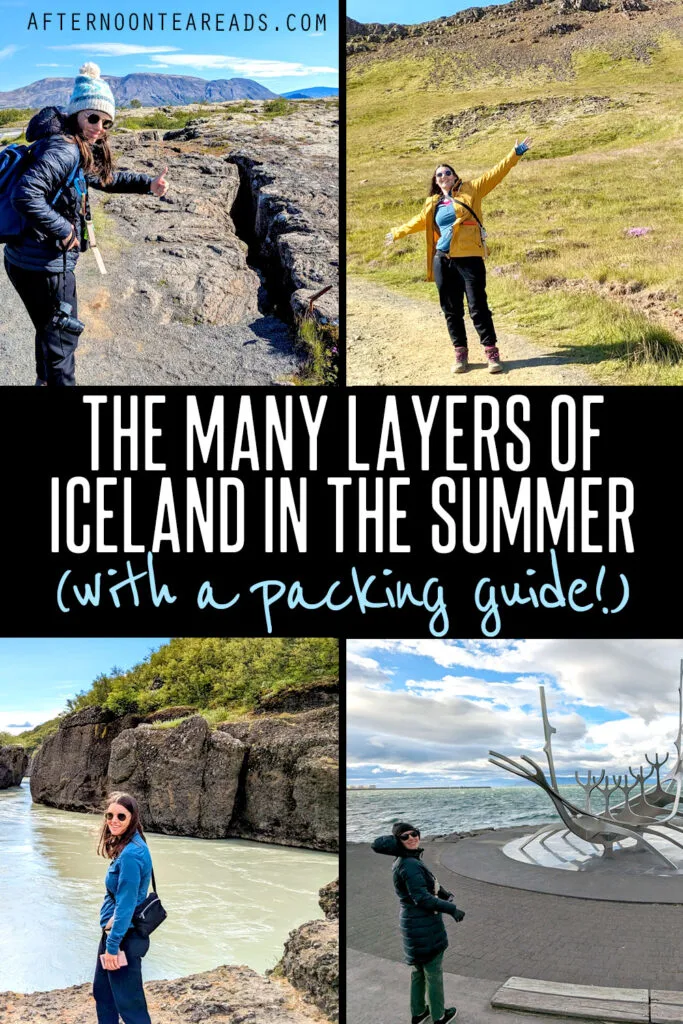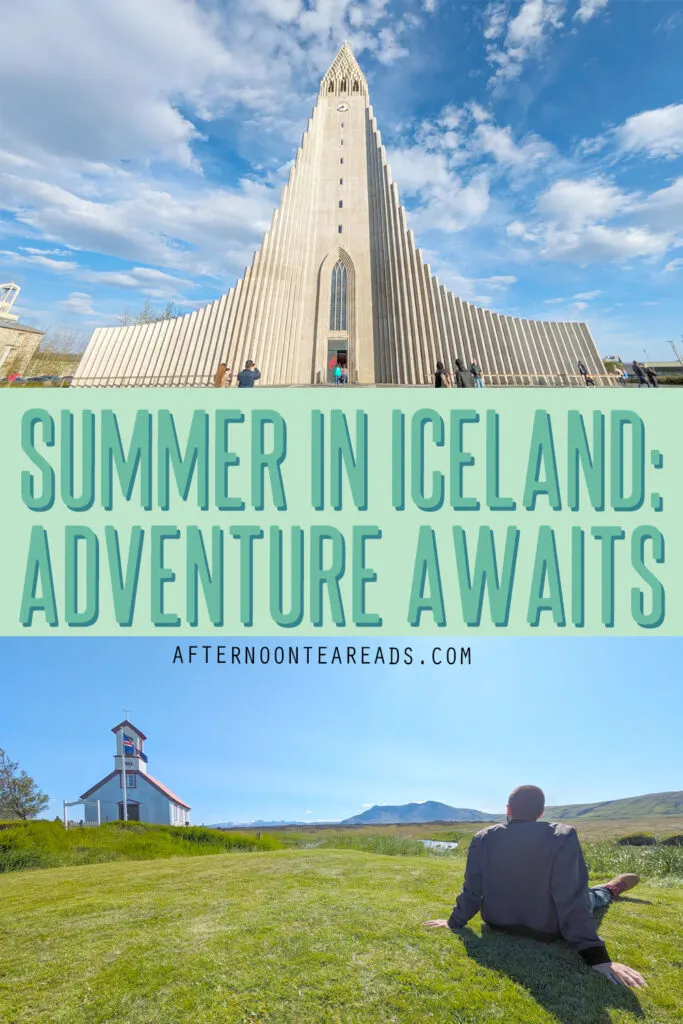I tend to avoid high season travel as much as possible, but I had to be in Europe in July and decided to extend my trip to include Iceland.
I thought I would run into high season travel complications, but Iceland in the summer ended up being the perfect time to visit! The weather was better (warmer, less rain), and I was happy that there were actually people around. But the summer in Iceland also brings the midnight sun, and with that no chance of seeing the Northern Lights.
So here’s everything you need to know about visiting Iceland in the summer, and why you might actually prefer visiting during this time of year.
Psst! This blog post contains affiliate links in it which sends me a bit of extra money if you use them… at no extra cost to you!
Midnight Sun: Forget About Seeing the Northern Lights in the Summer
There’s no doubt that Iceland is a popular destination to see the Northern Lights, but there’s a very small chance of seeing them in the summer. That’s because there’s midnight sun in Iceland from April until September. Be prepared for minimal darkness when you visit Iceland in the summer, especially in July when there’s almost 21 hours of daylight.
The midnight sun comes with other negatives too… like the fact that it might be harder for you to fall asleep at night. Your sense of time is definitely a bit out of whack when it’s 9:00 P.M. and still light outside. Hotels will have blackout blinds, but I also recommend bringing your own eye mask. Be prepared that you might not naturally wake up in the morning either, because it will still be completely dark in the room.
P.S. Check out my Reykjavik travel planner with a packing guide, and top things to do checklists!
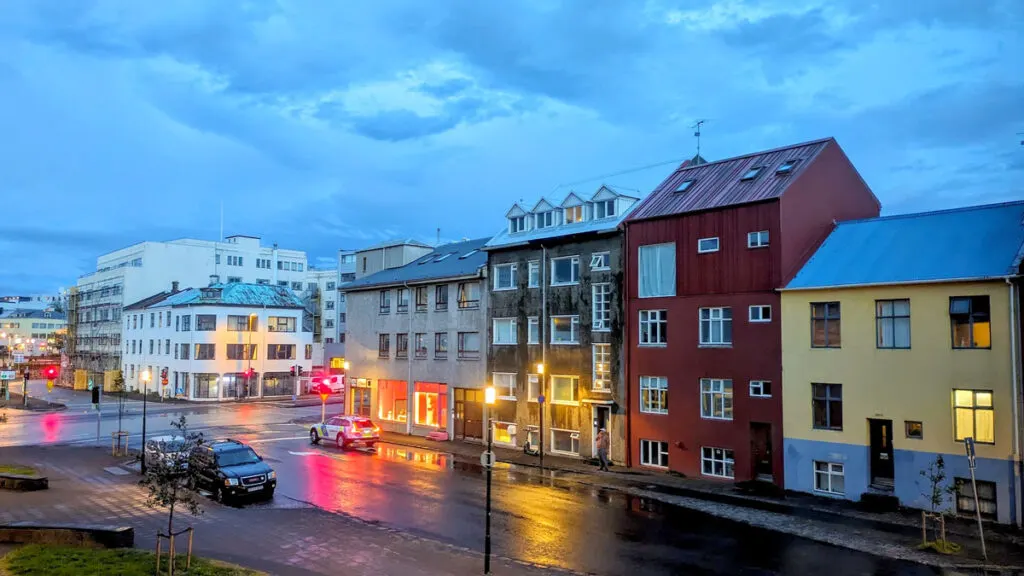
But Benefit from Having More Daylight & Longer Golden Hour!
But Iceland’s midnight sun also has some secret positives to the days being longer. For example, you can stay out longer on the road without worrying about driving back in the dark (p.s. see my top 10 day trips from Reykjavik!).
When I’ve done day trips in other countries (even in the summer), I’d always make sure to leave well before sunset to get back to my hotel before dark. Sometimes I would miss out on activities because I ran out of daylight. This wasn’t the case in Iceland in the summer! In fact, my first day in Iceland, I left at 7:00 in the morning and only made it back to the hotel at 10:30 at night… it was definitely a long day but it was made possible by the extra sunlight.
I ended up doing so much more in Iceland than I have when touring other cities in the summer just because my days were that much longer (this also led to me being extremely tired for a week, but it was worth it!).
You’ll also want to stay out a bit later in the summer in Iceland if you want the most magical photos. Golden hour is known as the best time for photography because it has the best natural “golden” light right when the sun is setting, but before it gets too low. The tricky part about golden hour is that it typically doesn’t last very long… unless you’re in Iceland when the sun never sets!
Golden hour will be much later in the evening in Iceland in the summer, but there’s way less of a time rush. You can take as long as you want to set up that perfect golden hour photo.
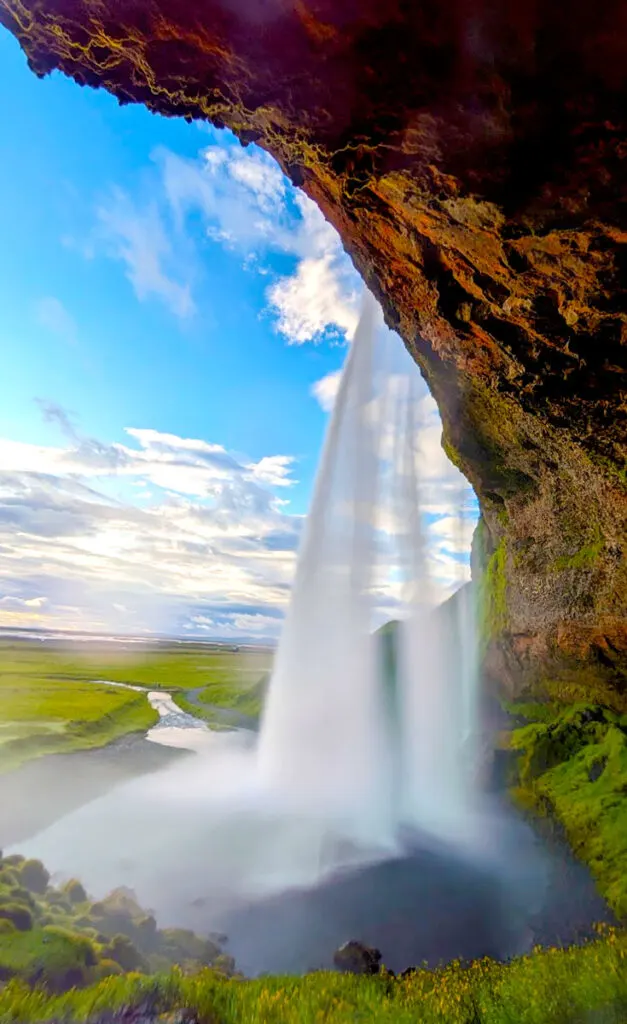
There are more Tourists… but not too Many
My biggest concern about visiting Iceland in the summer was that it would be over crowded with tourists. But I’m happy to report that this wasn’t always the case. Of course, there were some exceptions at the most popular attractions, but it still wasn’t near what I expected.
Reykjavik was populated, but it’s always nice to have people in a city for it to feel lively. I was still able to get into restaurants without a reservation and without waiting in line. And I was still somehow the only person at the Sun Voyager sculpture (which is one of the top things to do in Reykjavik).
The most crowded locations were along the Golden Circle route, like at Golfoss, and Geysir, and on route to Vik, like Skogafoss and the black sand beach. But you were often able to get a good picture without anyone else in it, especially if you were patient. It was a lot of tour buses on the Golden Circle route, so crowds came in waves.
All the top Iceland attractions are outdoors so you always have more than enough space to spread out from the crowds. You’re never cramped as you would be a museum with limited space (and I did go to some museums in Iceland, they were still pretty empty and spacious!). Because they’re outside, you also don’t have to worry about these attractions selling out, they’re (for the most part) free. There’s also quick turn over so I also never struggled to find a parking spot.
I will admit, my sister visited in May and she definitely had way less people in all her photos (but she also had way worse weather than I did… more on the weather in Iceland in summer in a bit!).
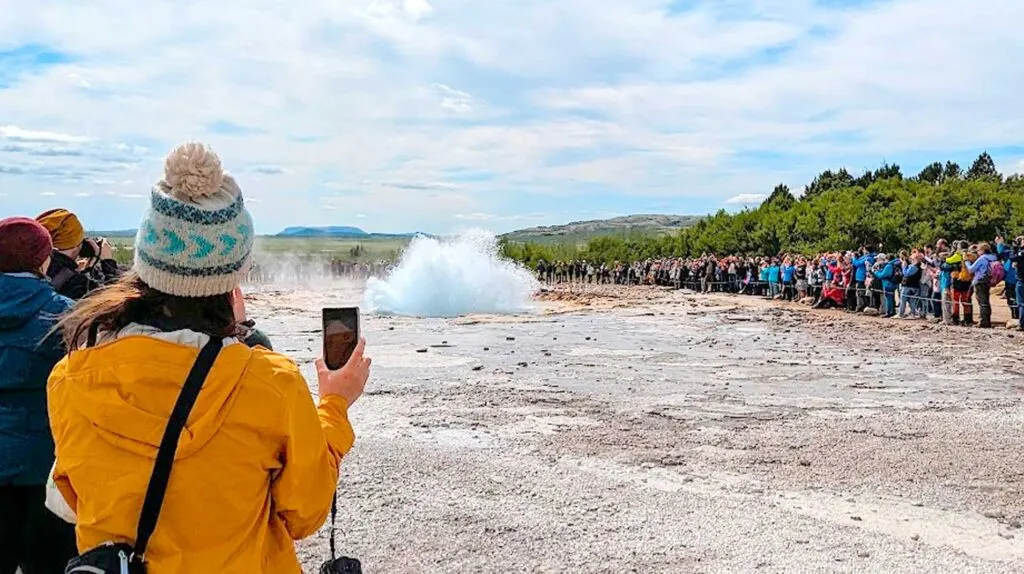
And everywhere else in Iceland felt like it was normal low season travel. Locations were never completely deserted, but also not over crowded either. This was actually appreciated because for the most part, you’re in the middle of nowhere with spotty cell service and limited resources.
And if you travel in low season in Iceland you actually risk attractions being closed due to lack of tourists. And as I mentioned, you also don’t have to worry too much about booking attractions too much in advance (the one exception was the Blue Lagoon and the Sky Lagoon… but even those I could have booked the day of in the end). Plus, now at the more remote locations we visited I was just happy there were people. And I somehow still went on quite a few tours without anybody – which was shocking.
I’d take a few over crowded top attractions over being the only one at less popular attractions. Keep in mind, the farther you go from Reykjavik, the less people there will be anyway.
Plus, remember summer in Iceland bring the midnight sun, so if you ever did want to see a main tourists spots without other tourists, you can go early in the morning or later in the evening. For the most part, these are outdoor attractions with no actual opening and closing hours.
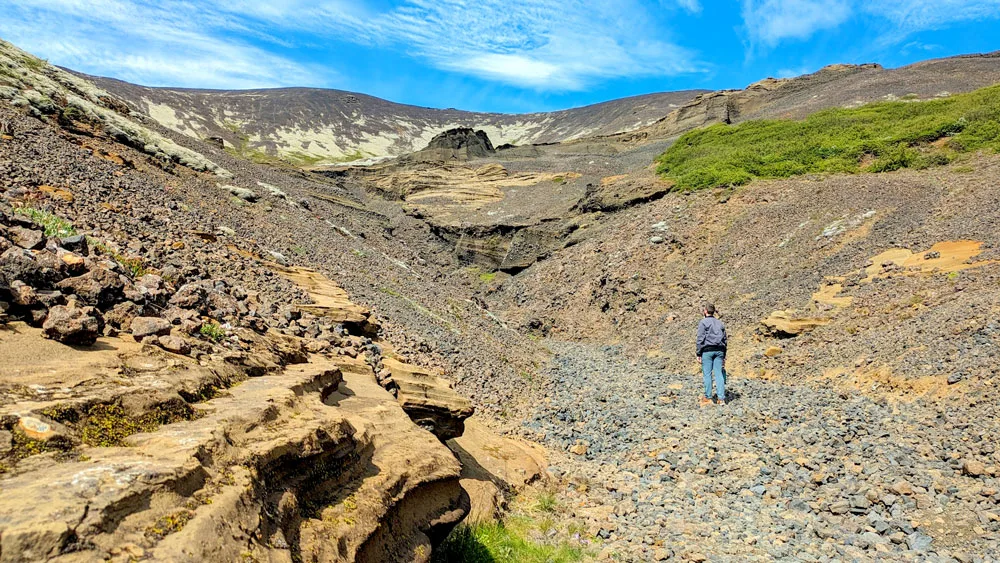
The Weather in the Summer in Iceland is a Mixed Bag
I would argue, that visiting Iceland in the summer does give you the best weather (for Iceland anyway!). The weather in Iceland all year round is nothing great, but it’s the least worst in July. And you might even get lucky with some decent weather.
The average temperature in July is 10°C (50°F), but it can go all the way up to 20°C (68°F). August starts cooling off already by the end of the month, and it tends to see more rain than July. But these are still the hottest and driest months of the year.
But this is still Iceland we’re talking about, so the weather can still be a mixed bag in the summer. The weather can change in a second from rainy and cold day, to warm and sunny (and vice versa). It also tends to warm up tremendously in afternoon but cooling off again by the evenings. So you still have to be prepared for anything…
And The Weather Affects What You Can Do…
Not to repeat myself too much, the activities in Iceland are pretty much all outside. So your ability to do these activities are weather dependant. Of course they don’t shut down in bad weather, but at least for me, my enjoyment of an outdoor activity is heavily associated with having good weather. So any additional chance of not having rain is a chance I’m willing to take.
The weather also affects the driving conditions. If your plan is to drive around the ring road in Iceland, it’s much safer to do in the summer. If you visit Iceland in the winter, on top of it being colder, and rainier, you also add in the chance of snow to the mix too! The driving conditions are scary in the winter, with heavy winds and snow causing road closures. I had no issues driving in the summer, and bad road conditions never even crossed my mind. The roads were clear all the time (granted, I also didn’t go past Vik).
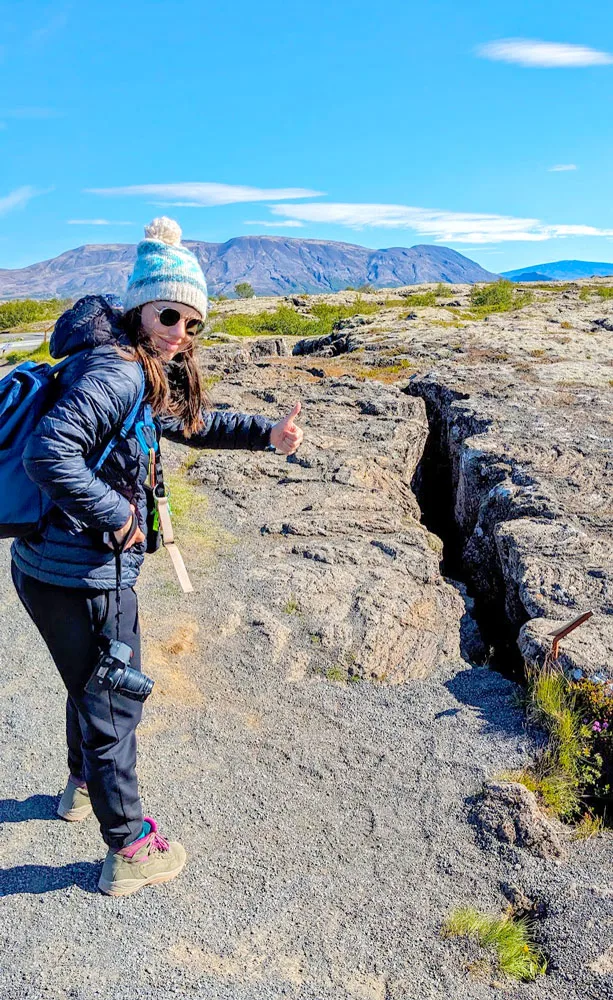
The Key is to Pack In Layers for Summer in Iceland
The key is to pack layers, bringing warmer clothes and rain gear on a trip to Iceland in the summer. You want to make sure you’re warm and dry no matter what the weather brings. Plus, you have to pack appropriate gear for each outdoor activity you’re interested in (like hiking, and hot spring relaxing!).
I packed three jackets for my trip to Iceland: a short puffer, a long puffer, and a waterproof windbreaker. I also packed a thin merino wool sweater that could easily fit underneath anything and warmer polar fleece. And even though I felt silly packing winter accessories on a summer vacation, I was very happy to have gloves and a hat.
For bottoms, I LIVED in these winter running joggers from Decathlon. For even colder days, I had a thin merino wool leggings for underneath (you can get this matching base layer with leggings and a sweater!).
For shoes, I only packed waterproof options. For city walking, waterproof Cloud ONs are now my go to travel shoes. And for more rugged hiking, I wear waterproof Columbia Newton Ridge. And I had Darn Tough merino wool socks to keep my feet even warmer (p.s. these are also great for saving space when packing because you can wear them multiple days, packing less socks!).
On top of waterproof shoes and a rain jacket, I packed a lot more rain gear than I’ve ever packed before. I got some rain pants and even a rain cover for my bag. Not only is this good if you have a full day of rain ahead of you, but I also wore them at waterfalls to get up close (like walking behind Seljalandsfoss).
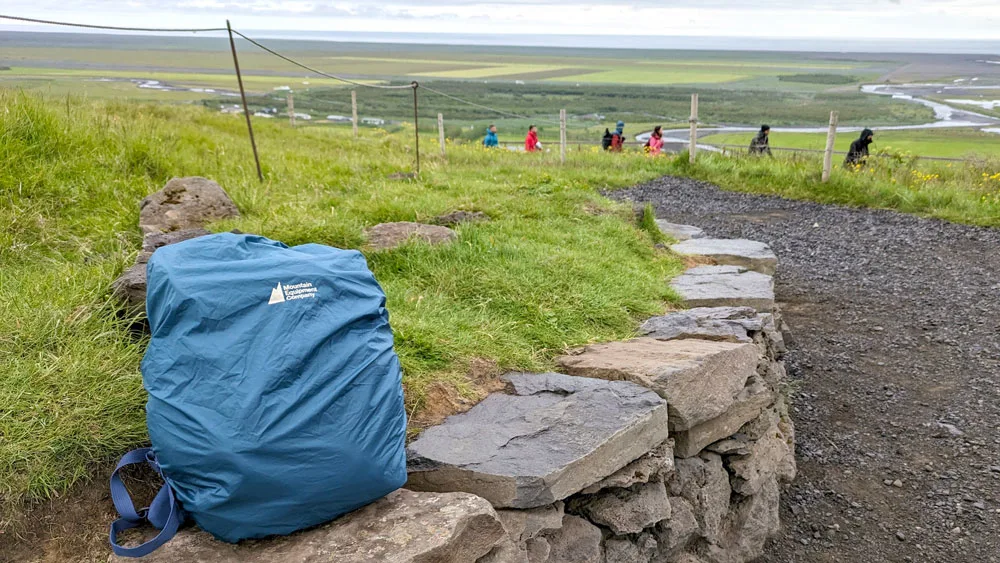
And to top off your rain gear, it’s also important to bring (and put on) sunscreen in Iceland in the summer. Even though it might not be that warm, the UV could still be high, and you can still burn. Similarly, you’ll also want to pack sunglasses for those sunnier days (because they do happen too!).
As I said, expect to change several times throughout the day. I would be wearing all my layers in the morning, to only wearing a thin merino wool sweater by the afternoon, and then put it all back on by the evening. You can see my full packing checklist in my Reykjavik travel planner on Etsy.
Would I Recommend Visiting Iceland in Summer?
As skeptical as I was before visiting Iceland in the summer, it was actually the perfect place to visit during “high season” summer travel. It wasn’t over crowded like some other European cities during the same time. Plus, it’s good to feel busy and have people around you in such deserted places. Iceland during low season might actually be a bit too deserted for my liking.
Plus you want to go with the best chances of getting the best weather in Iceland, and that’s the summer. Unless you want to see the northern lights, then summer is the worst time to visit, you’ll have to come back in the winter for that!
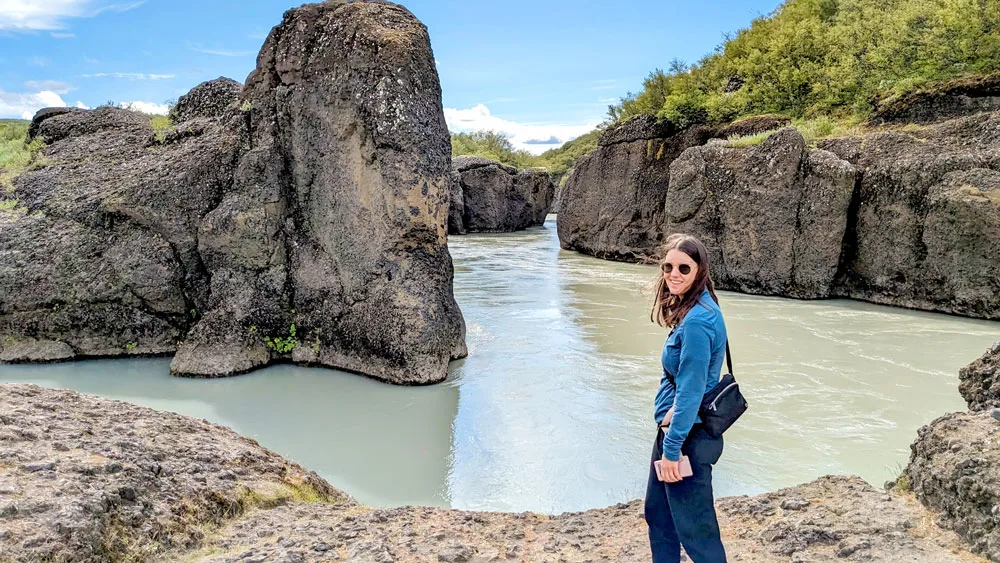
Where to Stay in Reykjavik in the Summer?
We stayed in Reykjavik our whole time in Iceland at the Skuggi Hotel by Keahotels. They offered free parking (upon availability), breakfast, and a modern room. Check updated prices and availability on Booking.com.
If you’re interested in spa services at the tip of your fingers, ( I mean, you’re in Iceland after all!), stay at Midgardur by Center hotels. My parents stayed here and highly recommend it. Check updated prices and availability on Booking.com.
If you’re staying in Reykjavik for one night before heading out to drive the Ring Road, my sister stayed at the Hotel Frón and would recommend it for a one night stay. Check updated prices and availability on Booking.com.
Or, check out more hotel options on Booking.com in Reykjavik, Iceland
Printable Reykjavik Iceland Travel Guide
Make the most of your first trip to Reykjavik with my printable travel guide. It includes 14 pages to plan the perfect trip to Iceland, with top things to do, eat, and buy plus a packing guide and common phrases translated to Icelandic!
Start planning your perfect trip to Reykjavik, check it out on Etsy.
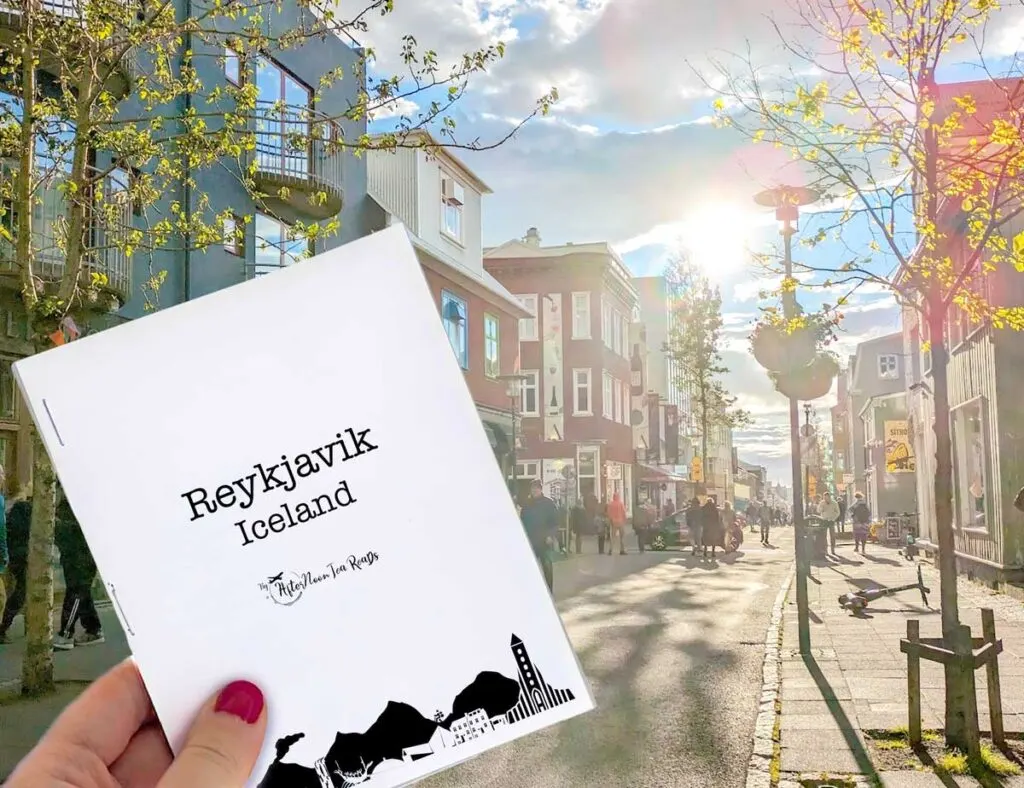
My Iceland Amazon Must Haves
Read More Related Posts
- 5 Reasons Why I Didn’t Drive Iceland’s Ring Road
- Don’t Book Blue Lagoon Tickets Before A Flight…Do This Instead
- 10 Important Tips You Should Know Before Driving In Iceland
Click Image To Share Or Save This Post
Last update on 2025-06-11 / Affiliate links / Images from Amazon Product Advertising API

